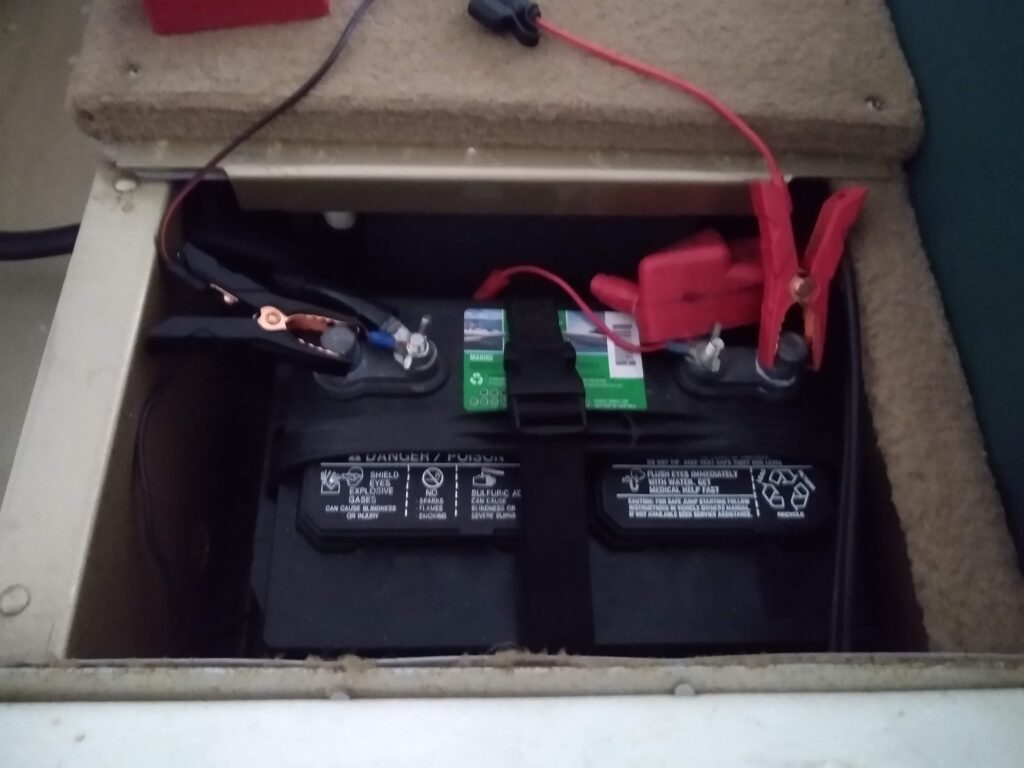A battery can lose – depending on how and where it is stored – up to 30% of its charge per month – just sitting around the house or garage or storage facility! And there are all kinds of things that affect battery charge and loss thereof (like temperature, humidity, state of discharge, age of the battery, etc.). Most of us never consider any of them. Like young children, batteries require loving care: I call it battery maintenance.
This page may contain affiliate links, which means I may earn a commission if you click through and make a purchase. Read our Affiliate Disclosure.
The Basics
Although I have found that the subject of batteries and battery maintenance to be a multi-faceted subject that encompasses many different topics, I am going to limit my discussion to a few of the most important “basics”. I want to briefly discuss: the things that will easily destroy a battery, sulfation, and basic maintenance.
Things That Will Destroy a Battery
There are essentially two things that will quickly and easily destroy your battery: either 1) undercharging it or 2) overcharging it. Most of both deep cycle and starting batteries are simply containers for several lead-plates, filled with sulfuric acid (electrolyte).
Simple chemistry dictates that undercharging them will ultimately cause lead sulfate to accumulate on the plates. This will eventually destroy the battery because the normal chemical reaction that should take place will be unable to continue. Overcharging the battery will accelerate the natural corrosion of the plates due to excess electrons being literally boiled out of the electrolyte. Ultimately, the fluid boils away and the plates are exposed to the air, which ruins them.
Sulfation
Have you ever had a battery that seems to work well but “dies” much more quickly than expected? The problem may be a battery that is heavily sulfated. This is often the result of only light use (being discharged by only 15% or so). The sulfuric acid has become concentrated on the battery’s bottom, and sulfate crystals have begun to form. And even though a multi-meter will indicate that all is well in terms of voltage, the capacity of the battery has become severely reduced. Sure, the battery will work just fine, but it will die much sooner than normal.
There are certain types of chargers that have a setting that will temporarily boost the charging voltage for a brief period of time, causing a mixing of the electrolyte, and dissolving the crystals. The process is called equalization and can be done – depending on the manufacturer – about once a year. But beware: this should only be done on wet cell batteries. This same process can ruin other types. And you will need to make sure that you disconnect the batteries from the electrical system to prevent the higher voltage from damaging other equipment.
Maintenance
Batteries have come a long way since the 1960’s. Back then, most – if not all – wet cell batteries were dry to start with. In the storeroom of the gas station at which I worked, there was a large box with a plastic bag filled with electrolyte – sulfuric acid. I found out it was acid the hard way; in filling a battery, I once managed to splash the electrolyte all over my pants. I didn’t realize the power of the stuff until my work pants got washed. They looked as if I had been shot by a machine gun: one leg was nothing but holes! Now there is an incredible variety of batteries that are available for every imaginable use: marine starting & trolling, auto, agricultural, industrial).
They all have at least one thing in common: they need to be maintained to some degree – even the “maintenance free” types. They will lose their electrolyte during normal use and need to be checked; all need to be recharged. Most of us still use the wet cell types for marine applications, although there are essentially three distinct types of lead acid batteries (see “Categories“) manufactured for marine applications, and any one type can be designed and built for either starting or deep cycle applications.
Maintenance-Free and NON Maintenance-Free
As I mentioned, the gelled acid and AGM types are essentially maintenance free since they are sealed. But because of this, be very careful when recharging them. “Smart charger” technology is required, or damage can easily result.
They are also more expensive but do have their advantages. The most important thing for the flooded acid variety is to keep them full. Top them off with distilled water only whenever possible, as minerals in tap water can contaminate the electrolyte.
Keep the terminal clamps clean and free of corrosion; coat them with anti-corrosion spray or even petroleum jelly. Check connections and keep them tight; watch for frayed wires and replace them as necessary. And for a few bucks spent at your local auto parts store, a Battery Hydrometer – used to check the specific gravity of the battery (concentration of acid in it) is a good investment. It is a great way to determine if one of the cells is bad. If the difference in specific gravity is 30 points or more… it’s time to replace your battery!
That’s it for now. Hope to see you on the lake!
rk








